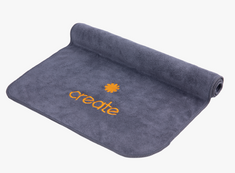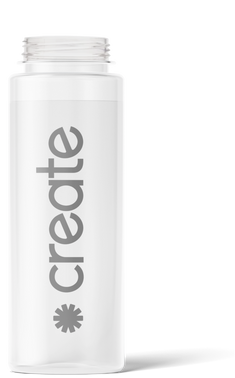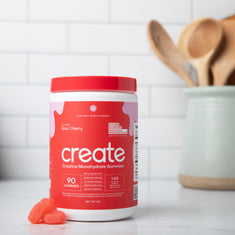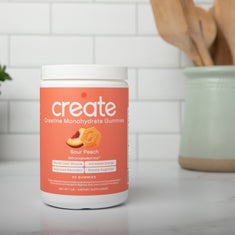Fueling Speed: The Science Behind Creatine For 800m Runners
Maximize your performance with the science-backed advantages of creatine for 800m runners, unlocking enhanced speed and endurance.
Supplementing with creatine gives 800m runners a significant edge by improving their energy metabolism and supporting brief spikes in maximal effort that are essential for middle-distance competitions. Research shows that it improves power, speed, and recovery—all of which are crucial in the 800-meter event. For example, studies on elite middle-distance runners showed that using creatine boosted their sprint performance and decreased their weariness. It improves anaerobic capacity and raises phosphocreatine reserves, which is beneficial for overall athletic performance. Supplementing with creatine has the ability to greatly increase the speed, endurance, and overall excellence of 800m runners, giving them a competitive advantage.
What Are The Physiological Demands Of The 800-meter Run?
High aerobic capacity for endurance and anaerobic power for speed bursts are necessary for the 800-meter run, which requires a careful balancing act between the aerobic and anaerobic systems. Excessive effort causes lactic acid to build up, which affects muscle function. The ability to maintain speed and endurance is essential, and careful pacing controls energy output. Oxygen debt follows excessive exercise. Training that aims to increase anaerobic and aerobic capacity maximizes performance. Research on professional 800-meter runners shows that in order to reach maximum performance and execute a good race, training modifications focusing on certain physiological factors are essential.
Aerobic Capacity
In the 800m run, aerobic capacity promotes effective oxygen consumption, which is important in the early and middle stages of the race. This capacity is improved by long interval training, tempo runs, and aerobic threshold exercises. Research shows that among top runners, higher lactate thresholds, enhanced aerobic capacity, and greater 800m performance are all positively correlated.
Anaerobic Energy Systems
Short, intensive efforts are powered by anaerobic systems (ATP-PC and glycolytic) in the 800m run. Exercises that target these systems include interval training, hill sprints, and repeated 200–400 m sprints. Gaining anaerobic capacity improves kick efficiency, speed, and endurance against lactic acid accumulation—all important for long-distance running in the 800m competition.
Lactic Acid Accumulation
The lactic acid buildup results in muscle exhaustion and decreased performance. Training techniques that help control lactic acid accumulation include interval training, tempo runs, and lactate threshold exercises. For 800-meter runners, active recovery, adequate hydration, and nutritional techniques like bicarbonate loading help buffer and postpone the onset of tiredness.
Speed Endurance
In the 800m, speed endurance refers to the ability to run at fast speeds even when fatigued. Exercises that increase speed endurance include split runs, longer intervals with brief recoveries, and four to six sets of 150 to 300 m runs at race pace. Improved speed and endurance are closely related to maintaining momentum, running powerful finishes, and succeeding in the 800m competition as a whole.
Strategic Pacing
In the 800m, strategic pacing entails striking a balance between speed and energy distribution. Even splits or a quick start and gradual acceleration improve performance. Competent runners track their efforts, save energy for last-minute surges, and keep their cool. Knowing their limits, honing their race-specific pace, and making tactical adjustments for peak performance are all beneficial for 800-meter runners.
Oxygen Debt And Recovery
Intense anaerobic efforts during the 800 meters cause oxygen debt, which leads to a lack of oxygen after the race. Active recovery techniques that promote debt repayment and muscle regeneration include light jogging, adequate hydration, diet, and cooldowns. Recovering from races at your best requires using effective approaches that guarantee fresher muscles and energy restoration for future races.
How May Creatine Benefit 800m Runners?
Studies on professional runners have shown that creatine increases anaerobic capacity, improves sprint performance and lowers tiredness. Athletes gain a variety of benefits from its capacity to increase phosphocreatine levels, including improved speed, endurance, and overall 800-meter race performance.
Improved Energy Production
For quick energy release during sprints, creatine increases ATP regeneration. Research indicates that supplementation raises phosphocreatine levels, which improves ATP availability. Increased ATP promotes a quicker energy turnover, which benefits the speed and power output that 800-meter runners need to maintain pace and produce strong finishes.
Enhanced Sprint Performance
Creatine supports the quick, explosive motions required for sprints by increasing phosphocreatine reserves. Studies reveal gains in sprint times in athletes who take creatine supplements. Increased power output supports 800-meter runners throughout the acceleration stages, which are critical for final kicks and strategic positioning, maximizing total race performance.
Buffering Lactic Acid Buildup
By promoting ATP regeneration and helping to remove lactate, creatine acts as an indirect buffer against lactic acid. Increased levels of phosphocreatine from supplements help to sustain ATP levels by lowering the need for glycolysis and the consequent generation of lactate. In the 800-meter race, this buffering effect helps sustain high-intensity efforts by postponing lactic acid buildup-related tiredness.
Quicker Recovery Between Intervals
Creatine's role in ATP regeneration, which is crucial for prolonged high-intensity exercise, facilitates faster ATP replacement between intervals. This impact is enhanced when creatine supplementation is combined with post-workout recovery nourishment, which speeds up muscle recovery. This accelerated recovery can enhance training quality and overall performance for 800-meter runners participating in interval training.
Maintenance Of Power Output
Creatine maintains phosphocreatine levels, allowing for consistent power production. Its function in ATP regeneration helps to postpone exhaustion, which is essential for sustaining performance in the later portions of the 800m. Periodized training combined with creatine supplementation can help maintain power output and maximize performance during the crucial stages of the race.
Muscle Hydration
The osmolytic properties of creatine increase intracellular water retention, which improves muscle hydration. Research indicates that taking creatine supplements is associated with higher muscular water content. Maintaining muscular function, lowering the chance of injury, and maximizing performance during strenuous efforts—all of which are critical in the later phases of the race—are all aided by optimal hydration for 800m runners.
How Can 800m Runners Practically Integrate Creatine Into Their Daily Nutrition?
800m runners can start with a loading phase of 20g per day for a week, then 3-5g per day of maintenance. Timing creatine with meals or after a workout facilitates absorption, maximizing benefits for training and competition. You can improve creatine uptake and utilization by mixing it with protein or carbs.
Loading & Maintenance Phase
Saturating muscles, 800m runners usually take 20g/day (four dosages) during the loading period, which lasts five to seven days. After that, switch to a maintenance phase of 3-5g/day. Misinformation is often the source of concerns over excessive loading, but research backs up this strategy as a secure and efficient way to maximize muscle creatine storage.
Timing Of Creatine Intake
For best absorption, use creatine with meals or after a workout. Timing after exercise coincides with increased sensitivity to insulin and blood flow in the muscles, which improves absorption. When overall consumption is appropriate, potential conflicts with acidic beverages or caffeine may modestly impair absorption but do not negate the benefits of creatine.
Combine With Meals
Thanks to the insulin response, combining creatine with food facilitates absorption. Meals high in protein or carbs, such as yogurt and fruit or chicken and rice, help the body absorb creatine. Optimizing creatine's benefits for 800m runners' performance and recuperation requires including it in a balanced nutrition plan to ensure constant intake.
Avoid Caffeine And High-Tannin Beverages
Since they could compete with creatine for absorption pathways, caffeine and high-tannin beverages may somewhat impair creatine absorption. This interaction can be lessened by limiting caffeine consumption or splitting the time between ingestion and creatine use. Putting performance first, modifying the schedule, or selecting different drinks guarantees that 800m runners are getting the most out of their creatine intake.
Consider Nutrient Timing
Timing your nutrition intake to match your consumption of proteins or carbs will improve your uptake and use of creatine. Taking creatine right after working out increases insulin response and facilitates absorption. When creatine is combined with meals high in carbohydrates (like fruits) or proteins (like chicken), the synergy of nutrients is maximized, which helps 800-meter runners perform better and recover faster.
Ready, Set, Create - Elevate Your 800m Game With Creatine Monohydrate!
Creatine gummies may be just what you need. This powerful supplement has been shown to have countless benefits for athletes, especially those who run in the 800-meter event. It enhances muscle recovery, increases strength and power output, and can give you that competitive edge when it really counts. By timing your consumption with protein or carbohydrate intake and using it after workouts, you optimize absorption and get maximum benefits from creatine. So don't wait! Step up your game today with creatine monohydrate and leave the competition in your dust. Your journey to unprecedented athletic heights starts here!











